In this photo, all of the antennas of the Very Large Array are in their maintenance position — pointing straight up like tulips in the New Mexico desert. The VLA has 27 antennas at work in the array, with one spare.
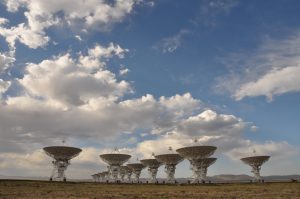
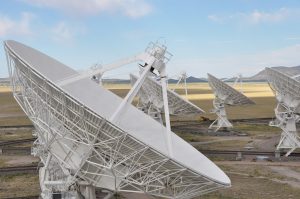
Close up of VLA antenna dish
Standing on a 25-meter dish antenna at the Very Large Array in New Mexico gives an antenna’s eye view of the array. The VLA telescopes are busy observing, as they do day and night, for 5000 hours every year.
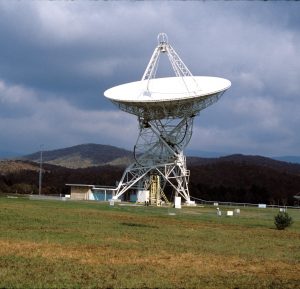
GBI’s first 85-foot telescope
The 85-foot Howard E. Tatel telescope in Green Bank was the first radio telescope of the NRAO and began observing on February 13, 1959. It was nicknamed the Tatel and became famous in 1960 for performing the world’s first SETI observations under the direction of Dr. Frank Drake.
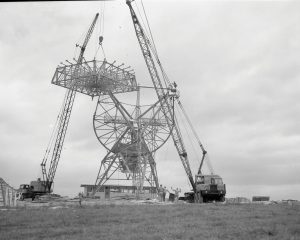
Building the NRAO’s first telescope
Building the NRAO’s first radio telescope, the 85-foot Howard E. Tatel. The 85-foot arrived in Green Bank as a kit from the Blaw-Knox Corporation of Pittsburg, Pennsylvania in 1958. Assembly was quick, and the Tatel began observing on February 13, 1959. In 1960 it became famous for performing the world’s first SETI observations under the direction of Dr. Frank Drake.
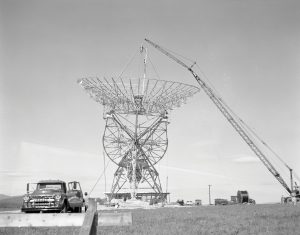
Placing the dish on the 85-foot telescope
Photographed here is the backup structure for the NRAO’s first radio telescope, the 85-foot Howard E. Tatel in Green Bank. The 85-foot arrived in kit form from the Blaw-Knox Corporation of Pittsburg, Pennsylvania in 1958. It began observing on February 13, 1959 and became famous for performing the world’s first SETI observations under the direction of Dr. Frank Drake.
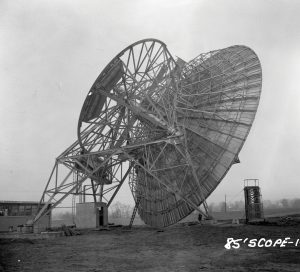
Installing the Tatel’s receiver
Here is a rare look at receiver installation on the 85-foot Howard E. Tatel radio telescope at Green Bank. At the time of this photo, the Tatel was just coming online in 1959 as the NRAO’s first radio telescope. The telescope could bend 90 degrees along the polar axis and weighed nearly 210 tons.





